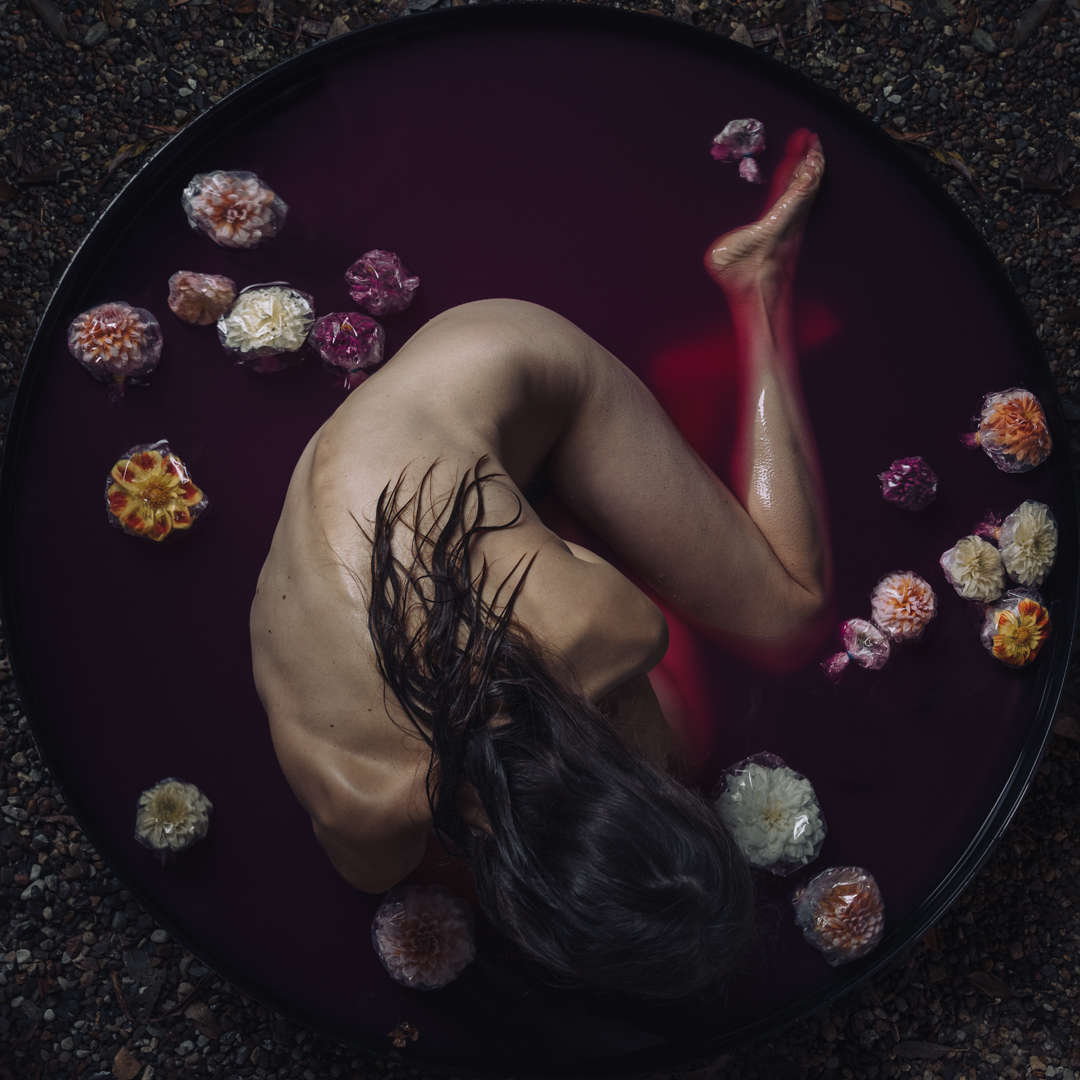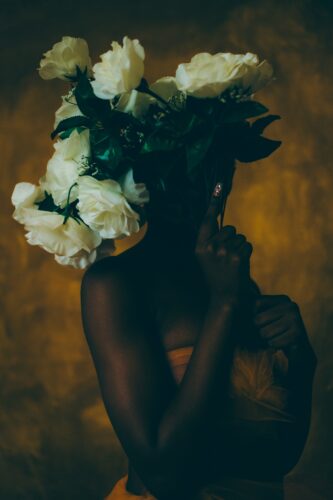Artburst Extras
Barcelona’s ‘Bodyscapes’ Reimagined For Miami’s Design District

Maria Fynsk Norup, “Preserved Beauty I,” (2021), Photography, is part of the “Bodyscapes” group exhibition, which explores the body and embodiment through the eyes of 14 female artists, in a large-format digital art experience in Miami’s Design District. (Photo courtesy of Load Gallery)
Miami’s Design District is about to swap ad screens for art. Barcelona’s Load Gallery is installing a custom 40-foot-wide “Artbox” LED wall– a display built for art rather than advertising– to premiere “Bodyscapes,” a group exhibition in which fourteen women artists treat the body not as spectacle but as terrain shaped by memory, bias, and breath. The United States debut lands at Jayaram’s studio (3800 NE 1st Ave., Suite 500), a law-and culture hub that has quietly become a testing ground for larger-format digital art experiences in Miami.
Co-organized by Load’s founder, Alex Simorré, and Miami attorney/arts advocate Vivek Jayram, “Bodyscapes” extends the gallery’s Barcelona run and widens it for Miami’s context–a crossroads where Latin America, the Caribbean, Europe and the U.S. already overlap on the street. Load frames the series around the idea of the body as landscape across photography, video, performance, and Artificial Intelligence; nature isn’t merely a backdrop but an active collaborator–especially water, which recurs as lens and force. That curatorial backbone remains intact here, now scaled up across multiple LED walls anchored by the 40-footer.
“The best shows are deep studies in contrast,” says Jayaram. “If we want people to meet digital art on its own terms, start with the most familiar subject in art history – the human body – and then let the technology recede into pure expression.”
Why the 40-foot wall matters in Miami
Suppose projection-mapping and consumer TVs made digital art feel like demo reels. In that case, the Miami installation argues for a purpose-built display: ultra-wide, with color, motion, and sightlines engineers for artworks first. Jayaram’s team began experimenting with large format screens during 2023’s “Making Miami” initiative. Their Design District studio now houses the 40-foot Artbox as a permanent platform for commissions, talks and premieres – a feature the firm has documented repeatedly, calling it “impossible to miss” when you enter the space. It’s a viewing scale that invites collective looking –people gather, the room breathes, and the work claims the kind of spatial authority long reserved for painting and sculpture.

Ivona Tau, “Unbeautiful #29,” Image. Tau’s series confronts how community-trained AI models sexualize and deform women’s bodies. (Photo courtesy of the Load Gallery)
The ‘Bodyscapes”
Christy Lee Rogers–bodies as light underwater
Rogers makes films and photography underwater, suspending dancers in baroque drifts of fabric and light. On a 40–foot canvas, that liquidity reads like somatic water– the body refracted rather than posed, a counter gaze that floods the frame instead of centering it. Museums and institutions have noted her choreography, lighting and color recall the drama of 17th-century painting; the LED format heightens that painterly aura while preserving motion. Expect images to feel less like “scenes” and more like weather passing through the room
Ivona Tau – “Unbeautiful” and the algorithmic gaze
Tau’s series confronts how community-trained AI models sexualize and deform women’s bodies, especially in repositories where male-coded “preferences” dominate. By training diffusion models on her own analog photographs, she stages portraits that let the glitches speak: fingers multiply, features slip, and beauty standards crack under the pressure of their own bias. In Miami, her work positions the LED wall as a critical surface, not a neutral one–an image skin that remembers who trained it and why.
Adaeza Okaro – weather within the portrait
Okaro’s portraits layer skies and atmospherics into faces and gestures, visualizing identity as fluid as weather–clouds that don’t erase features so much as translate mood and memory. Her practice moves between fine art, editorial, and fashion while maintaining an intimacy that turns sitters into collaborators. For “Bodyscapes,” that attention to interior weather grounds the show’s photographic register–less spectacle, more listening with the eyes. Profiles from PhotoVogue and Adobe track her trajectory from early camera experiments to a portraiture language tuned to love, melancholy, and Black beauty.

Adaeze Okaro, “Yesterday, Everyday, Always,” (2019), photography. Okaro’s portraits layer skies and atmospherics into faces and gestures, visualizing
identity as fluid as weather–clouds that don’t erase features so much as translate mood and memory. (Photo courtesy of the Load Gallery)
“Bodyscapes” arrives on Tuesday, Dec. 2, in the midst of Miami Art Week (Dec. 1-7) but continues long after the crowds leave. Jayaram and Simorré are trying to decouple attention from the market clock, proposing Miami not only as a place to sell art, but as a place to prototype ways of showing it – especially computational and time-based work. Jayaram’s studio has already piloted that approach through premieres and cross-disciplinary programming; Load brings a European program that has methodically championed digital-first artists.
Taken together, the partners make a case for Miami as a city where technology and touch can coexist–where a work’s power is measured not in auction results, but in how convincingly it occupies a room and rearranges your breathing.
About the Artbox, Jayaram says that it grew out the same desire to put experience design on equal footing with curatorial ideas. “Bodyscapes” scales that ethos to multi-screen, multi-artist format and hands it to a cohort of women artists interrogating representation from the inside.

Farrah Carbonell, “Becoming Light,” (2025), Image. (Photo courtesy of the Load Gallery)
On paper, a 40-by-foot screen sounds like a pure spectacle. In person, it supports a different kind of attention: slow time. You can stand back and read the work as a horizon line; you can walk it and let edits, glances, and gestures arrive in sequence; you can watch with other people and feel the pieces swell and recede with the room’s energy. It’s not cinema setting; it’s not scrolling. It’s closer to fresco scale–only fresco is breathing.
There’s a quiet symbolism to where “Bodyscapes” lands. The Design District combines luxury retail with public art, and a studio’s purpose-built, non-advertising screen shifts the focus further toward culture. It says that the city wants to host premieres – not just fairs -and that digital artworks deserve tools as tailored as light-controlled galleries once were for painting. It also sees a public conversation: about who gets represented, how technology learns from us, and how we might look at bodies-our own and each other’s–without turning them into inventory for a platform.
WHAT: “Bodyscapes,” Barcelona’s Load Gallery
WHERE: Jayaram Law Studio, 3800 NE 1st Ave., Suite 500, Miami
WHEN: Opens Tuesday, Dec. 2 through Saturday, Jan. 31.
HOURS: The studio is open to the public, schedule visit in advance
COST: Free
INFORMATION: 305-496-2828 and load-gallery.com/exhibitions/group-show-bodyscapes-miami
ArtburstMiami.com is a nonprofit media source for the arts featuring fresh and original stories by writers dedicated to theater, dance, visual arts, film, music and more. Don’t miss a story at www.artburstmiami.com.
